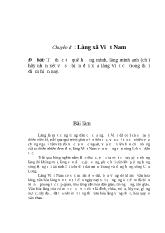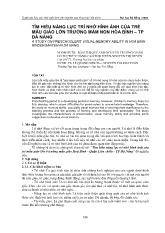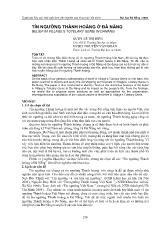Strategies to cope with non-Equivalence at word level in translation
- Người chia sẻ :
- Số trang : 57 trang
- Lượt xem : 5
- Lượt tải : 500
- Tất cả luận văn được sưu tầm từ nhiều nguồn, chúng tôi không chịu trách nhiệm bản quyền nếu bạn sử dụng vào mục đích thương mại
Bạn đang xem trước 20 trang tài liệu Strategies to cope with non-Equivalence at word level in translation, để xem tài liệu hoàn chỉnh bạn click vào nút DOWNLOAD LUẬN VĂN ở trên
Interlingual translation has never been an easy task. Much ink has flown on discussing the term equivalence in translation. It has sometimes been said that the overriding purpose of any translation should be to achieve equivalent effect,i.e. to produce the same effect on the readership of the translation as was obtained on the readership of the original. Will (1982) acknowledges the concept of translation equivalence(TE) as the “essential issue not only in translation theory, over the last 2000 years, but also in modern translation studies” (p.134). He even emphasizes that “there is hardly any other concept in translation theory which has produced as many contradictory statements and has set off as many attempts at an adequate, comprehensive definition as the concept of TE” (p.134).



